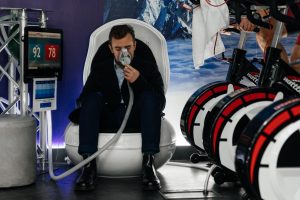We all know the health benefits of regular physical activity, and across his PhD, The Altitude Centre’s very own Liam Hobbins championed the use of altitude training to get even greater improvements in key health markers. It’s an incredibly exciting, new use of altitude training and shows great promise. Now, new research is emerging which supports its use for cardiovascular health.
What Did They Do?
Researchers from The Qinghai Institute of Sports Science in China studied 80 rats, which lived and exercised at sea level, 2,200 m, 3,500 m, or a combination of 2,200 m + 3,500 m for 6 weeks. In particular, they were interested in the rats’ cardiometabolic health, which includes factors such as their body weight and composition, and blood lipid profile (the fat and cholesterol in the blood).

What Did They Find?
The authors of the study found that, over 6 weeks, rats living and training at altitude lost significantly more weight than those at sea level. At the same time, these rats had between 9-13% better improvement in their triglyceride (fat) levels in the blood. Interestingly, a sub-group which only lived at altitude and did not exercise, still saw a big improvement in their plasma triglycerides, showing that even passive exposure to altitude can improve this outcome. The best improvement in triglycerides came from the group exposed to 2,200 m, while the group that had a mix of 2,200 m and 3,500 m had the best weight loss.
Weight and blood profile improved with exercise at moderate altitude, and blood profile even improved in a group that was exposed to altitude but didn’t exercise
What Does This Mean For You?
This research adds to the existing literature that shows exercise is good for cardiometabolic health, and exercise at altitude is even better. We know that having high amounts of fat in the blood, known as dyslipidaemia, is a key risk factor for cardiovascular diseases, atherosclerosis and high blood pressure, and that improving this marker is important in improving overall health outcomes. On this front, exercising at moderate altitude, with some exposure to higher altitudes seems to be the best approach. However, encouragingly it seems that even passive exposure to high altitude can help. This means that, while hypoxicHIIT sessions might be your best option for improving your health, on those days where another exercise session doesn’t seem appealing you can jump on the POD to get that exposure while giving yourself the r&r you need.

You can check out the full study here, and why not take a look at our exercise and intermittent hypoxic exposure sessions here.
